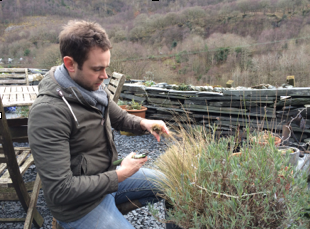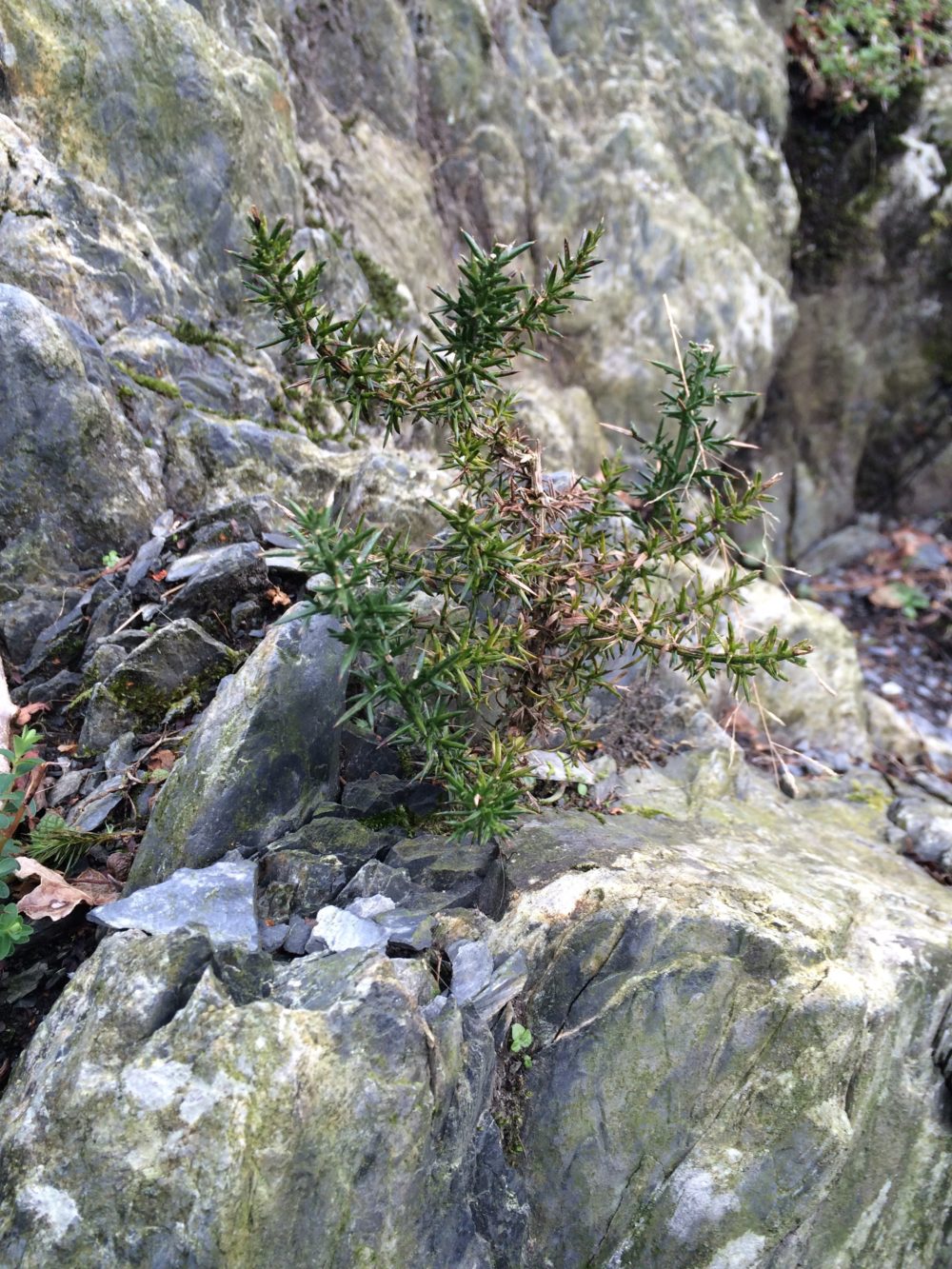This is one of our favourite times of year in the garden – although also the most unpredictable.

Bright clear days can seduce you into feeling like it’s springtime and then a sleety snow shower takes you right back into the murky depths of winter. The weather is a cruel mistress indeed! This year we’re all about the flowers in our garden so keeping one step ahead of the changeable weather is going to be key.
Last year we started out planting a few alpines on a rock that sits at the back of our garden. This year we’re going to keep adding to this to create a backdrop that has colour and interest all year round. Since we started we’ve really enjoyed watching how the alpines from last season have found their home on the seemingly implantable rock.
February can bring strong winds and unforgiving cold – we’ve watched the little plants bend and dance in the wind – but they’re clearly at home. Standing their ground and biding their time for the calmer and warmer times ahead.
To do our bit for these growing plants we’ve been keenly deadheading them and keeping an eye to make sure their not sitting in any pools of water that may collect – they do like good drainage. So far. So good.
What is an Alpine?

The name Alpine, conjures up images of high altitude, rocky slopes and harsh conditions. Quite appropriate really, sat here in Mid Wales. The Alpines we grow in our gardens are usually hardy plants that require really good drainage. Their ability to grow on sheer rock faces is difficult to imagine until you’ve seen them in action! Provided you get them in the right place (some like full sun, others prefer some shade) these plants will flourish and spread across their position creating the most natural looking plants in the most unnatural locations. They make a suitable starter if you’re a beginner and are a great way to make the most hostile of surfaces into a beautifully flowering garden.
Getting organised.
For us it’s still all about clearing up the garden, keeping on top of leaves and other debris that flies into our garden.
We’re also using this time to sort out last year’s seed packets. The great thing about seeds is everything you need to know is written on the back! Who’d have thought! Most of the seed packets we’ve got at the moment have come as freebies on gardening magazines so we’re brushing up on where they like to be planted and at what time of the year. Any that we don’t think will like our conditions are going on a ‘swap’ pile that we’ll take round to our friends in the village over the next few weeks.
Now is also the time to check your soil. You can pick up PH testing kits cheaply and check your own soil. Once you know what you’ve got, you can add different composts and mixes to change the composition. If your soil is dense and holds a lot of water – mixing grit into the soil can improve drainage massively. As always think ahead – work out what sort of plants you’re preparing to plant and prepare the soil accordingly.
Look at what’s working now – and what isn’t!

This is a brilliant time to have a look at what is going to happen in your garden throughout the spring and summer. Plants have had a winter of weather and you can really see which of last year’s new plants are happy in their current location.
So now’s the time to identify gaps in your flowerbeds and planting areas and work out what to put in them. If you know what you’ve got already and what flowers when, you can plan to put in plants that flower at other times to keep your garden looking vibrant all year round. Planting like this is a real skill and it can take a lifetime to master. You can play with flower colours, leaf shapes, plant heights – the only limit is your imagination.
If you’re looking for inspiration visit local show gardens and National Trust gardens to ask the experts what they do. Planting beautiful flower beds full of interest and imagination all year round is one of the most rewarding parts of gardening, and the results can be truly spectacular – so get cracking!
We’d love to see pics of how your gardens are coming along this year! Get in touch by searching ‘Andy and Adam’s’ on Facebook or follow @andyandadams on Twitter.


